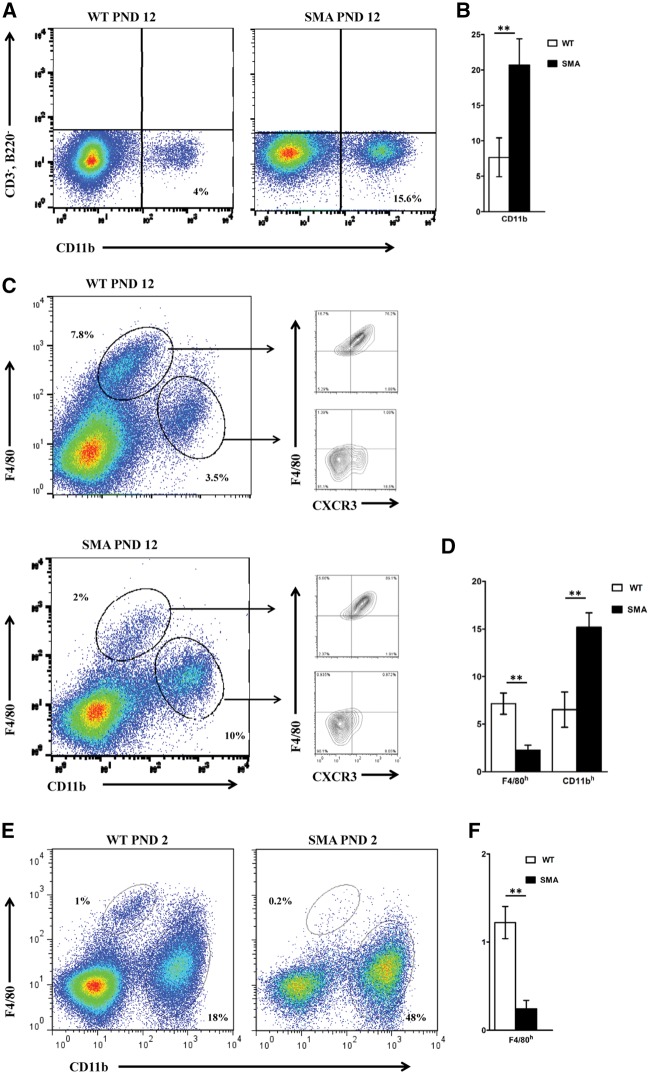Figure 5.
Higher frequency of CD11b+ macrophages and reduction of the yolk sac-derived population in SMA spleens. Total splenocytes from individual WT (left) and SMA (right) spleens of SMNΔ7 mice at PND 12 were surface labeled. (A) Frequency of CD11b macrophages (CD3-, B220-, CD11b+) are indicated relative to live CD3-, B220- splenocytes in representative FACS plots. (B) Bar graph showing the mean percentages ± SEM for six mice per group. (C) Total splenocytes from individual WT (upper) and SMA (lower) spleens were stained with anti-CD11b and anti-F4/80 antibodies and the different subsets of macrophages were identified by flow cytometry. Frequency of (F4/80low CD11bhigh) and (F4/80high CD11blow) subsets are indicated relative to live CD45+ splenocytes in representative FACS plots. Right panels depict the percentage of cells expressing CX3CR1 in each of the two macrophage populations. (D) Bar graph showing the mean percentages ± SEM for six mice per group. (E,F) Same as (C) and (D) for spleens harvested at PND 2.

